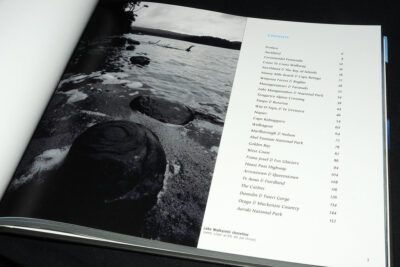
It may feel like an afterthought or process a writer goes through when the writing is done, but whether or not to include a table of contents (TOC) warrants careful thought and special attention. The discussion that follows is based on my own (unofficial) research and inspection of various titles in my own small library.
What is a TOC anyway? Basically, it’s a list of chapters and page numbers at the beginning of a book. As a writer, it’s important to know what options and recommendations are out there. Let’s take a look at those that are the clearest (and probably non-negotiable)—nonfiction.
Nonfiction
Generally, it’s recommended that nonfiction books have a TOC. It will help the reader find the section(s) they want to read. When you’re submitting a nonfiction book proposal, it’s important to send an annotated (notes giving explanation or comment) TOC.
Fiction
Here’s where writers (and agents, editors, etc.) have more flexibility and creative freedom. My own bookshelves provided some examples that might help or influence your decision-making process.
My copy of The Thorn Birds (655 pages) is broken down into seven sections. Each section is dedicated to a specific span of years and a major character in the book. For example, Section One is from 1915-1917 and is entitled Meggie. Section One encompasses pages 3-64.
Diana Gabaldon’s wildly popular Outlander series of books treats the TOC in a different, equally creative way. Her most recent book, Go Tell the Bees That I Have Gone, lists the book in parts with a short phrase or sentence below. Then each chapter is numbered and titled. Here’s how part of her contents page reads:
PART ONE
A Swarm of Bees in the Carcass of a Lion
1. THE MACKENZIES ARE HERE 3
Children’s books can enjoy the same flexibility and creative formatting. Where the Sidewalk Ends (the poems and drawings of Shel Silverstein) has no TOC. Instead, it has part of a poem and an invitation by the publisher to enjoy Shel’s collection of poems and drawings. Then the reader dives right in.
My 1963 copy of a Nancy Drew mystery lists chapters (in Roman numerals), a short title, and page numbers. Example:
VII The Reckless Pilot 58
The advantage of providing a bit of a clue or information in a chapter listing is that it gives the reader a hint about what will happen in that chapter. It’s also fun for readers to know where that chapter is that they enjoyed so they can go back and read it again.
What About Memoirs?
Personal preference and intent might influence a writer’s decision whether or not to include a TOC in a memoir. Chapters with descriptive names might be helpful in that they can give the reader a sense of what the memoir is about. Others may forego one if they feel it might spoil the suspense or flow of the narrative. It’s worth the extra time and thought as the writer begins to put thoughts to the page.
Some writers structure their stories in sections, rather than chapters, and there are writers who write books with no chapters at all. They just start the story and keep going. Some writers forego chapter titles because they don’t want to reveal what is going to happen. Example: A chapter title of Lydia Escapes might be giving away more than the reader intends. This may be a story where the TOC has chapter numbers only.
If you dwell in the fiction realm, there are numerous ways to inform (or not) your reader about what is between the covers of your book. You can entice them, give them a hint, or simply provide a chapter number and page. Perhaps there is no TOC at all. At any rate, it’s worth dedicating some time and thought to presence or absence, how it will affect your story, and the readers who will experience what you’ve set down for them.

Niki Kantzios
Thanks for giving us something to think about. I’ve always avoided naming the chapters for fear of giving the story away, but there are still times when a TOC might help.
Anne
You’re welcome – hope it helped!
Nancy Nau Sullivan
I love naming my chapters! And, I guess, I have a strange way…I name each after writing it. Sometimes I read the chapter backwards to grab words that trigger the naming. I used to write copy for pr and newspapers, and I think the experience helped play- on -words. Well, I love words–I guess most FWA – ers do! Thanks for the post. Interesting!
Anne
Glad you enjoyed the post! Your process for chapter naming is interesting, and worth a try!